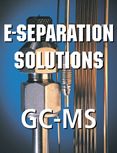Ask the Editor: UHPLC Particle Size Limitations
Q: The current advent of sub-2-?m particles has made ultrahigh-pressure liquid chromatography (UHPLC) available for routine laboratory use. What are the size limitations for particles? How small can they get before the advantages are lost? Would smaller particles require even greater pressures?"
The answer to the following question was provided by Roy Eksteen of Tosoh Bioscience (Montgomeryville, Pennsylvania).
An LCGC reader recently submitted the following question:
The current advent of sub-2-µm particles has made ultrahigh-pressure liquid chromatography (UHPLC) available for routine laboratory use. What are the size limitations for particles? How small can they get before the advantages are lost? Would smaller particles require even greater pressures?
The last part of the question is simple and that is where I will start. More pressure will be required when particle size is lowered, to the extent that a 50% reduction in particle size will lead to a fourfold increase in pressure when the same linear velocity is maintained through the packed bed. There is not an end to this relationship, although I am doubtful that it continues to hold at the atomic level.
With regards to the first part of the question, I am not aware of a theoretical limit to ever-higher efficiency with reducing particle size. After discussion with others more skilled in theoretical physics, I suggest that particle aggregation becomes more and more a problem when reducing particle size down to 1 µm and below, to the point that packing a stable and efficient column bed becomes practically impossible. I realize that the trouble with such an answer is that the problem of aggregation (or any nontheoretical limitation) leaves the door open for some future solution. I'll live with that.
Questions?
LCGC technical editor Steve Brown will answer your technical questions. Each month, one question will be selected to appear in this space, so we welcome your submissions. Please send all questions to the attention of "Ask the Editor" at lcgcedit@lcgcmag.com We look forward to hearing from you.

Analyzing Vitamin K1 Levels in Vegetables Eaten by Warfarin Patients Using HPLC UV–vis
April 9th 2025Research conducted by the Universitas Padjadjaran (Sumedang, Indonesia) focused on the measurement of vitamin K1 in various vegetables (specifically lettuce, cabbage, napa cabbage, and spinach) that were ingested by patients using warfarin. High performance liquid chromatography (HPLC) equipped with an ultraviolet detector set at 245 nm was used as the analytical technique.
Removing Double-Stranded RNA Impurities Using Chromatography
April 8th 2025Researchers from Agency for Science, Technology and Research in Singapore recently published a review article exploring how chromatography can be used to remove double-stranded RNA impurities during mRNA therapeutics production.
The Effect of Time and Tide On PFAS Concentrations in Estuaries
April 8th 2025Oliver Jones and Navneet Singh from RMIT University, Melbourne, Australia discuss a recent study they conducted to investigate the relationship between tidal cycles and PFAS concentrations in estuarine systems, and offer practical advice on the sample preparation and LC–MS/MS techniques they used to achieve the best results.
Assessing Safety of Medications During Pregnancy and Breastfeeding with LC–MS/MS
Published: April 8th 2025 | Updated: April 8th 2025Researchers conducted a study on medications used in psychiatry and neurology during the perinatal period, assessing how antiepileptic drugs (AEDs) affect placental functions, including transport mechanisms, nutrient transport, and trophoblast differentiation. Several quantitative methods, such as those for antianxiety and hypnotic drugs, were established to evaluate the safety of pharmacotherapy during breastfeeding using liquid chromatography-tandem mass spectrometry (LC–MS/MS).







